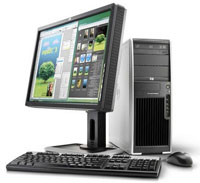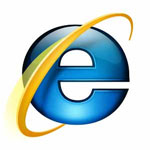Speed, efficiency security, and compatibility are several top reasons to maintain workstations.
Think about the following pertaining to peripherals, components, and speed:

- Operating System:An operating system (occasionally abbreviated as “OS”) is the program that handles all the different software programs on a pc. The additional programs are known as applications or application programs. The application programs make use of the operating system by generating requests for service.Review your software requirements to see what they recommend as most effective to run the packages you require to operate your business. Is that the one you want/need? Will it be compatible with the other operating systems in your workplace?
- Application Programs: Examples of application programs include Web browsers; development tools; word processors; database programs; drawing, paint, and image editing programs; and communication programs. Application programs use the services of the computer’s operating system and other supporting programs. Making sure your application programs are compatible with the operating system and existing or planned hardware must be considered at the same time.
- Processor: Fundamentally the brain of the computer, a processor is the logic circuitry that responds to and processes the basic instructions that run a computer. Instructions are the directives provided to a processor by a computer program. The word processor usually replaces the term central processing unit (CPU).
- RAM memory:RAM (random access memory) is the hardware component of a computer where the operating system, application programs, and current data in use are kept so that they can be quickly accessed by the pc’s processor. RAM is significantly speedier to read from and write to than other kinds of computer storage,such as the hard disk, floppy disk, and CD-ROM. However, the data stored in RAM stays there only as long as the computer is running. When the computer is turned off, RAM loses its data. When the computer is turned on again, the operating system and other files are once again loaded into RAM, usually from the hard disk.RAM can be compared to a human’s short-term memory and the hard disk to the long-term memory. The short-term memory focuses on work at hand, but can only keep so many facts in memory at one time. If short-term memory fills up, the brain is sometimes able to update it from facts stored in long-term memory. A computer works in a similar manner. If RAM fills up, the processor needs to constantly access the hard disk to overlay old data in RAM with new, slowing down the computer’s operation. Unlike the hard disk which can completely fill with data, RAM never runs out of space. It keeps operating, but considerably more slowly.
- Hard Drive Memory: In a pc, the hard disk drive (HDD) is the mechanism that controls the positioning, reading, and writing of the hard disk, which provides the biggest volume of data storage for the PC. Even though the hard disk drive (often shortened to “hard drive”) and the hard disk are not the same thing, they are grouped together as a unit and thus either term is sometimes used to refer to the whole unit.
- Network Card: A network interface card (NIC) is a computer circuit board or card that is installed in a computer so that it can connect to a computer network. Personal computers and workstations on a local area network (LAN) typically contain a network interface card specifically designed for the LAN transmission technology. Network interface cards provide a dedicated, full-time connection to a network
- Monitor: Does your job require you to have a screen that has a high resolution or will a lower resolution suffice? For word processing or spreadsheets and lower screen quality is adequate, while the highest resolution is preferred for graphics work.
- Video Card: An integrated circuit card in a computer or, in some cases, a monitor that provides digital-to-analog conversion, video RAM, and a video controller so that data can be sent to a computer’s display.
- Speakers and Sound: If audio editing, music and production is your computer’s primary purpose, choose speakers that assist you in doing your job best.
- Printers and Scanners:Printers vary in size, speed, sophistication, and cost. In general, more expensive printers are used for higher-resolution color printing. An inkjet printer sprays ink from an ink cartridge at very close range to the paper as it rolls by. A laser printer uses a laser beam reflected from a mirror to attract ink (called toner) to selected paper areas as a sheet rolls over a drum.Printer resolution (the sharpness of text and images on paper) is usually measured in dots per inch (dpi). Most inexpensive printers provide sufficient resolution for most purposes at 600 dpi.Having more than the minimum amount of memory is helpful and faster when printing out pages with large images or tables with lines around them (which the printer treats as a large image).
- CD Writers: A CD-ROM (Compact Disc, read-only-memory) drive is the mechanism that reads and writes computer data to CD-ROMs. A CD-ROM is an adaptation of the CD that is designed to store computer data in the form of text and graphics, as well as hi-fi stereo sound. Because of the larger programs most computers use, most pc’s now come with a CD-ROM drive as opposed to a floppy disk. Most computers now have the option of coming with a CD-R drive, a recordable version of the CD drive. Though you need a CD-R to record to. You can store up to 600MB on one of these CD’s.
Maintenance is essential for Security
 Microsoft in recent years has increasingly emphasized a campaign to actively urge users of its 2001-released Internet Explorer 6 browser to upgrade.
Microsoft in recent years has increasingly emphasized a campaign to actively urge users of its 2001-released Internet Explorer 6 browser to upgrade.
After launching IE 8 in March 2009, Micosoft has admitted what many critics have been complaining about for years, that IE 6 is outdated. Most people have abandoned the older browser, but the remaining users are frequently the challenging cases–those who have no choice because of corporate computing policy or who aren’t tech-savvy enough to realize there’s a reason to upgrade.
It’s this latter group of users that Microsoft is targeting with a campaign that touts its own IE 8+ as a better alternative. The campaign’s first visible elements are a video aimed at online holiday shoppers and a Web slice to promote daily deals at eBay. Web slices are essentially live bookmarks that can show miniature Web pages in the browser.
“What we’re doing with the outreach is help users understand how to protect themselves against social engineering threats that exist and to help people understand how Internet Explorer 8 puts people in control of their own privacy online,” said Ryan Servatius, senior product manager for Internet Explorer. Security was one of the big problems with IE 6, and Microsoft now boasts that security features in IE 8 block 2 million malware sites a day.
Web developers often gripe about having to support IE 6, which doesn’t support many modern features for more sophisticated Web sites and even applications. Microsoft acknowledges that it’s holding back development of the Internet, too.
“The best thing a user can do to advance the Web is to help move people off IE 6,” Servatius said.
Of course, many will upgrade to IE 8 by buying Windows 7. IE 6 was the browser that shipped with Windows XP, which remains entrenched, but there are signs Windows 7 is a more compelling successor than Windows Vista. That could help the corporate customers move away from IE 6, Servatius said.
“As enterprises migrate from whatever operating system they’re using today to Windows 7, that’s going to help deprecate IE 6,” he said. “What we’re doing is working both with consumers worldwide and IT professionals to help them understand what the benefits of a modern browser are.”